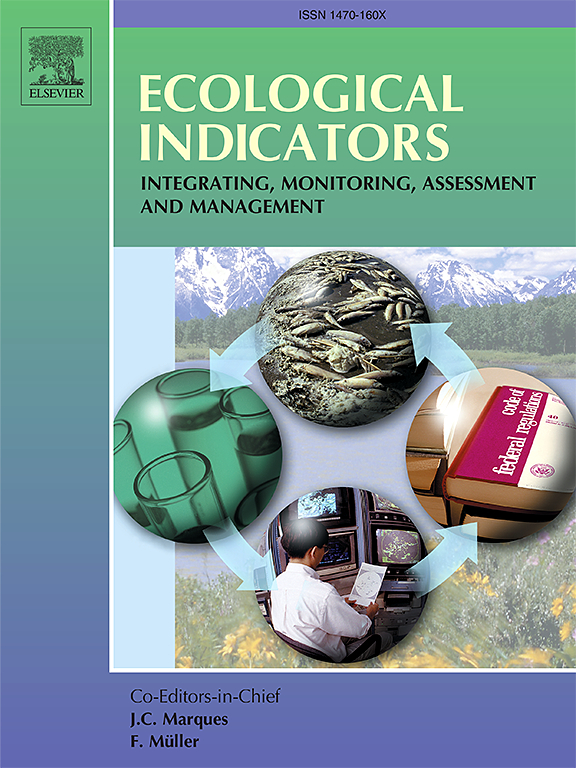Harmonised biological indicators for rivers and lakes: Towards European assessment of temporal trends in ecological quality
IF 7
2区 环境科学与生态学
Q1 ENVIRONMENTAL SCIENCES
引用次数: 0
Abstract
Freshwater biological indicators are essential and required by the EU Water Framework Directive (WFD) to assess ecological impacts of human pressures and measures to restore degraded rivers and lakes. The level of degradation and how this level changes over time can be assessed by using the ecological quality ratio (EQR) for each major group of biological communities. The EQR is measuring the deviation from reference conditions found in pristine waters on a harmonized scale from 1 (undisturbed water bodies) to 0 (fully deteriorated water bodies). EQR values have been reported by many European countries to the European Environment Agency (EEA), for four biological quality elements (BQEs): phytobenthos and benthic invertebrates in rivers, and phytoplankton and macrophytes in lakes. Following internal data processing, normalization, quality checking and publication of the dataset, the EQR data can be used to analyse trends to assess whether biological communities are recovering. Here we report on trend analysis based on consistent time series of normalised EQR values (nEQR) for years 2015–2021 from 2500 rivers and 700 lakes. For each of the BQEs, the time series were grouped according to their initial status (i.e. ecological quality of the BQE in 2015). For the subset of rivers where phytobenthos and benthic invertebrates initially indicated poor or bad status, the overall trends were positive (Sen’s slope S = 0.027 and 0.014, respectively). Correspondingly, positive trends were also found for phytoplankton and macrophytes in lakes with initially poor or bad status (S = 0.009 and 0.014, respectively). Conversely, for water bodies with initial status high or good, negative trends were indicated for all BQEs (S in range −0.027−−0.011), although statistically significant only for phytobenthos and invertebrates. These preliminary results demonstrate the potential of these indicators in assessing effectiveness of European water policies. Nevertheless, longer time series will be needed for more robust assessment of trends in ecological quality of water bodies.
求助全文
约1分钟内获得全文
求助全文
来源期刊

Ecological Indicators
环境科学-环境科学
CiteScore
11.80
自引率
8.70%
发文量
1163
审稿时长
78 days
期刊介绍:
The ultimate aim of Ecological Indicators is to integrate the monitoring and assessment of ecological and environmental indicators with management practices. The journal provides a forum for the discussion of the applied scientific development and review of traditional indicator approaches as well as for theoretical, modelling and quantitative applications such as index development. Research into the following areas will be published.
• All aspects of ecological and environmental indicators and indices.
• New indicators, and new approaches and methods for indicator development, testing and use.
• Development and modelling of indices, e.g. application of indicator suites across multiple scales and resources.
• Analysis and research of resource, system- and scale-specific indicators.
• Methods for integration of social and other valuation metrics for the production of scientifically rigorous and politically-relevant assessments using indicator-based monitoring and assessment programs.
• How research indicators can be transformed into direct application for management purposes.
• Broader assessment objectives and methods, e.g. biodiversity, biological integrity, and sustainability, through the use of indicators.
• Resource-specific indicators such as landscape, agroecosystems, forests, wetlands, etc.
 求助内容:
求助内容: 应助结果提醒方式:
应助结果提醒方式:


